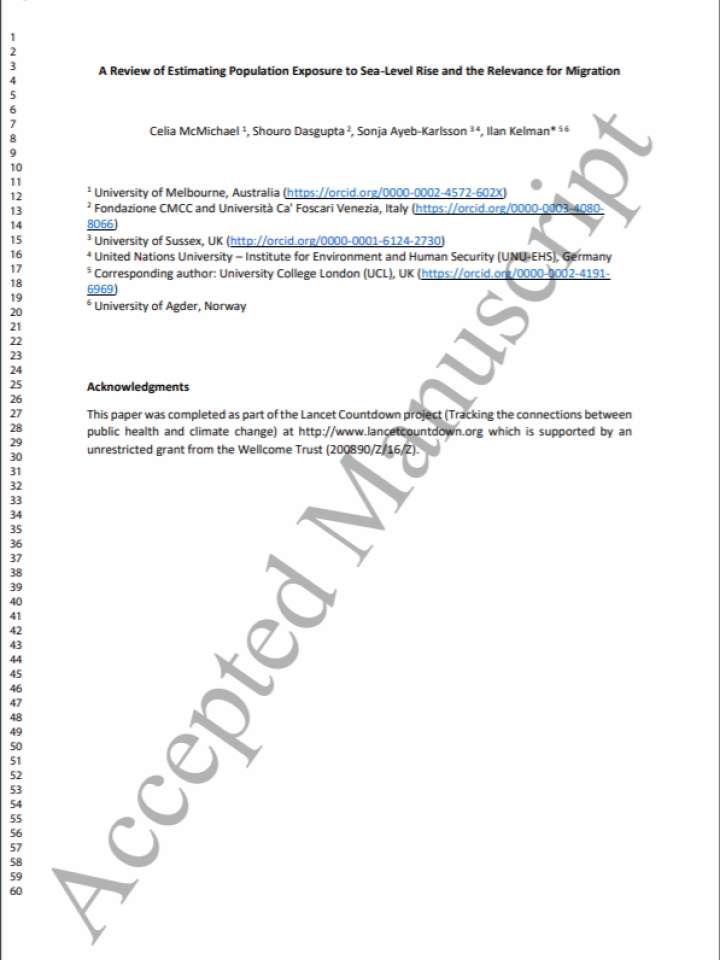A review of estimating population exposure to sea-level rise and the relevance for migration
This review analyses global or near-global estimates of population exposure to sea-level rise (SLR) and related hazards, followed by critically examining subsequent estimates of population migration due to this exposure. Our review identified 33 publications that provide global or near-global estimates of population exposure to SLR and associated hazards. They fall into three main categories of exposure, based on definitions in the publications: (i) the population impacted by specified levels of SLR; (ii) the number of people living in floodplains that are subject to coastal flood events with a specific return period; and (iii) the population living in low-elevation coastal zones (LECZs). Twenty of these 33 publications discuss connections between population migration and SLR. In our analysis of the exposure and migration data, we consider datasets, analytical methods, and the challenges of estimating exposure to SLR followed by potential human migration. We underscore the complex connections among SLR, exposure to its impacts, and migration. Human mobility to and from coastal areas is shaped by diverse socioeconomic, demographic, institutional, and political factors; there may be 'trapped' populations as well as those who prefer not to move for social, cultural, and political reasons; and migration can be delayed or forestalled through other adaptive measures. While global estimates of exposed and potentially migrating populations highlight the significant threats of SLR for populations living in low-lying areas at or near coastlines, further research is needed to understand the interactions among localised SLR and related hazards, social and political contexts, adaptation possibilities, and potential migration and (im)mobility decision-making.
Explore further
